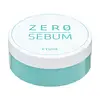What's inside
What's inside
 Key Ingredients
Key Ingredients

 Benefits
Benefits

 Concerns
Concerns

 Ingredients Side-by-side
Ingredients Side-by-side

Silica
AbrasiveMica
Cosmetic ColorantCaprylic/Capric Triglyceride
MaskingHydroxyapatite
AbrasiveDimethicone/Vinyl Dimethicone Crosspolymer
Skin ConditioningMethicone
Emollient1,2-Hexanediol
Skin ConditioningGlyceryl Caprylate
EmollientLimonene
PerfumingPinus Sylvestris Leaf Oil
MaskingWater
Skin ConditioningButylene Glycol
HumectantCitrus Aurantifolia Oil
CleansingEucalyptus Globulus Leaf Oil
PerfumingCitrus Aurantium Dulcis Peel Oil
MaskingCitrus Aurantium Bergamia Fruit Oil
MaskingGossypium Herbaceum Extract
Skin ConditioningCitrus Limon Peel Oil
MaskingSalix Alba Bark Extract
AstringentChamaecyparis Obtusa Leaf Extract
Skin ConditioningOriganum Vulgare Leaf Extract
Skin ConditioningCinnamomum Cassia Bark Extract
MaskingPortulaca Oleracea Extract
Skin ConditioningScutellaria Baicalensis Root Extract
AstringentLactobacillus/Soybean Ferment Extract
Skin ConditioningSilica, Mica, Caprylic/Capric Triglyceride, Hydroxyapatite, Dimethicone/Vinyl Dimethicone Crosspolymer, Methicone, 1,2-Hexanediol, Glyceryl Caprylate, Limonene, Pinus Sylvestris Leaf Oil, Water, Butylene Glycol, Citrus Aurantifolia Oil, Eucalyptus Globulus Leaf Oil, Citrus Aurantium Dulcis Peel Oil, Citrus Aurantium Bergamia Fruit Oil, Gossypium Herbaceum Extract, Citrus Limon Peel Oil, Salix Alba Bark Extract, Chamaecyparis Obtusa Leaf Extract, Origanum Vulgare Leaf Extract, Cinnamomum Cassia Bark Extract, Portulaca Oleracea Extract, Scutellaria Baicalensis Root Extract, Lactobacillus/Soybean Ferment Extract
Silica
AbrasiveDimethicone/Vinyl Dimethicone Crosspolymer
Skin ConditioningVinyl Dimethicone/Methicone Silsesquioxane Crosspolymer
Dimethicone
EmollientButylene Glycol Dicaprylate/Dicaprate
EmollientWater
Skin ConditioningMica
Cosmetic ColorantAlcohol Denat.
AntimicrobialButylene Glycol
HumectantCalamine
AbsorbentEthylhexylglycerin
Skin Conditioning1,2-Hexanediol
Skin ConditioningDehydroacetic Acid
PreservativeAcorus Calamus Root Extract
PerfumingSalicylic Acid
MaskingPropanediol
SolventCentella Asiatica Flower/Leaf/Stem Extract
Skin ConditioningTocopherol
AntioxidantDisodium EDTA
Sodium Hyaluronate
HumectantHydrolyzed Hyaluronic Acid
HumectantSodium Hyaluronate Crosspolymer
HumectantHyaluronic Acid
HumectantSodium Acetylated Hyaluronate
HumectantSilica, Dimethicone/Vinyl Dimethicone Crosspolymer, Vinyl Dimethicone/Methicone Silsesquioxane Crosspolymer, Dimethicone, Butylene Glycol Dicaprylate/Dicaprate, Water, Mica, Alcohol Denat., Butylene Glycol, Calamine, Ethylhexylglycerin, 1,2-Hexanediol, Dehydroacetic Acid, Acorus Calamus Root Extract, Salicylic Acid, Propanediol, Centella Asiatica Flower/Leaf/Stem Extract, Tocopherol, Disodium EDTA, Sodium Hyaluronate, Hydrolyzed Hyaluronic Acid, Sodium Hyaluronate Crosspolymer, Hyaluronic Acid, Sodium Acetylated Hyaluronate
 Reviews
Reviews

Ingredients Explained
These ingredients are found in both products.
Ingredients higher up in an ingredient list are typically present in a larger amount.
1,2-Hexanediol is a synthetic liquid and another multi-functional powerhouse.
It is a:
- Humectant, drawing moisture into the skin
- Emollient, helping to soften skin
- Solvent, dispersing and stabilizing formulas
- Preservative booster, enhancing the antimicrobial activity of other preservatives
Butylene Glycol (or BG) is used within cosmetic products for a few different reasons:
Overall, Butylene Glycol is a safe and well-rounded ingredient that works well with other ingredients.
Though this ingredient works well with most skin types, some people with sensitive skin may experience a reaction such as allergic rashes, closed comedones, or itchiness.
Learn more about Butylene GlycolThis ingredient is a silicone used to improve the texture of products and absorb oil. It does not get absorbed into the skin.
Like other silicones, Dimethicone/Vinyl Dimethicone Crosspolymer helps condition the skin by creating a barrier. In this sense, it can act as an emollient and trap moisture in.
This ingredient is a type of elastomer.
Learn more about Dimethicone/Vinyl Dimethicone CrosspolymerMica is a naturally occurring mineral used to add shimmer and color in cosmetics. It can also help improve the texture of a product or give it an opaque, white/silver color.
Serecite is the name for very fine but ragged grains of mica.
This ingredient is often coated with metal oxides like titanium dioxide. Trace amounts of heavy metals may be found in mica, but these metals are not harmful in our personal products.
Mica has been used since prehistoric times throughout the world. Ancient Egyptian, Indian, Greek, Roman, Aztec, and Chinese civilizations have used mica.
Learn more about MicaSilica, also known as silicon dioxide, is a naturally occurring mineral. It is used as a fine, spherical, and porous powder in cosmetics.
Though it has exfoliant properties, the function of silica varies depending on the product.
The unique structure of silica enhances the spreadability and adds smoothness, making it a great texture enhancer.
It is also used as an active carrier, emulsifier, and mattifier due to its ability to absorb excess oil.
In some products, tiny microneedles called spicules are made from silica or hydrolyzed sponge. When you rub them in, they lightly polish away dead skin layers and enhance the penetration of active ingredients.
Learn more about SilicaWater. It's the most common cosmetic ingredient of all. You'll usually see it at the top of ingredient lists, meaning that it makes up the largest part of the product.
So why is it so popular? Water most often acts as a solvent - this means that it helps dissolve other ingredients into the formulation.
You'll also recognize water as that liquid we all need to stay alive. If you see this, drink a glass of water. Stay hydrated!
Learn more about Water